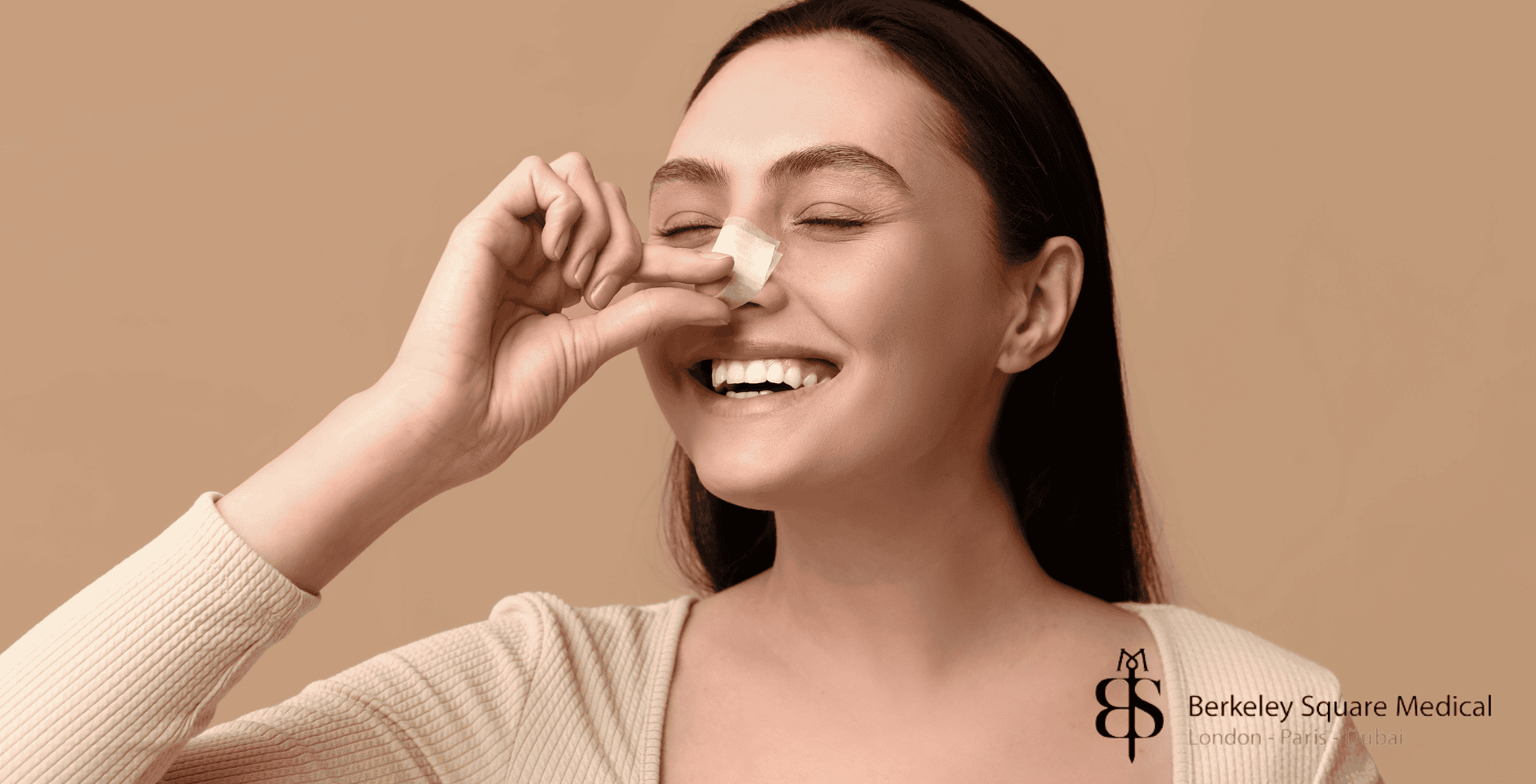Your nose plays a central role in your appearance and function. Although rhinoplasty and septoplasty are both procedures that involve nasal surgery, they address different concerns. In this guide, we explain the differences, benefits, risks, and recovery expectations of each procedure—and help you determine which one may be right for your needs.
What is Rhinoplasty?
Definition:
Rhinoplasty (commonly known as a “nose job”) is a cosmetic procedure that reshapes the nose to achieve a more balanced, natural appearance. It can also address functional issues like sinus problems or breathing difficulties.
The Procedure
- Anaesthesia & Incisions:
- Performed under general anaesthesia.
- Incisions are typically made internally (closed rhinoplasty), though open rhinoplasty—with a small external incision—may be necessary for complex cases.
- Surgical Steps:
- The soft tissue is separated from the underlying nasal framework.
- Bone and cartilage are reshaped to correct deformities (e.g., dorsal hump removal, tip refinement).
- The tissues are then redraped over the new structure.
- Duration:
- Generally takes 1–2 hours.
- Most patients return home the same day.
Possible Risks
- Infection
- Pain or numbness
- Scarring
- Swelling or skin discoloration
- Breathing difficulties
- Risks related to anaesthesia
Recovery Process
- Initial Days:
- Expect some pain, pressure, and bruising around the eyes.
- A nose splint and/or packing may be in place for 3–7 days.
- Returning to Routine:
- Most patients resume light activities within a few days.
- Full recovery (and final appearance) may take several weeks to a few months.

What is Septoplasty?
Definition:
Septoplasty is a functional surgery performed to correct a deviated septum—the cartilage and bone dividing your nostrils—which can lead to breathing difficulties, chronic congestion, and related issues.
The Procedure
- Anaesthesia & Access:
- Typically performed under local or general anaesthesia.
- An incision is made inside one side of the nose to access the septum.
- Surgical Steps:
- The mucous membrane (protective lining) is lifted.
- Deviated or excess cartilage/bone is trimmed or repositioned.
- The mucous membrane is then re-draped and secured with stitches or splints.
- Duration:
- Usually takes 60–90 minutes.
- Patients often go home the same day.
Possible Risks
- Scarring
- Bleeding
- Change in the external shape of the nose
- Nasal discoloration
- Formation of septal perforations
Recovery Process
- Post-Op Care:
- You may experience mild pain and swelling.
- Avoid blowing your nose for several days and keep your head elevated to reduce swelling.
- Follow-Up:
- Nose packing or splints are typically removed after 3–7 days.
- Most patients resume normal activities within a week, though full healing may take longer.
Quick Comparison: Rhinoplasty vs. Septoplasty
| Feature |
Rhinoplasty |
Septoplasty |
| Primary Goal |
Cosmetic enhancement (and sometimes improved function) |
Functional improvement (correcting a deviated septum) |
| Incisions |
Mostly internal (closed) or external (open) if needed |
Internal incisions (usually on one side) |
| Procedure Duration |
1–2 hours |
60–90 minutes |
| Recovery Time |
Light activities in a few days; full healing takes several weeks to months |
Light activities within a week; full healing may vary |
| Risks |
Infection, scarring, anesthesia risks, breathing issues |
Bleeding, scarring, slight change in external shape, septal perforation |
| Cost & Insurance |
Generally cosmetic (often self-funded) |
Often covered by insurance (medical necessity) |
| Can Be Combined? |
Yes – when both cosmetic and functional issues exist (septorhinoplasty) |
Yes – can be combined with rhinoplasty |
Septoplasty vs. Rhinoplasty Cost
Septoplasty typically costs less than rhinoplasty and, because it addresses a medical (functional) problem, it is often covered by insurance. At Berkeley Square Medical, we offer an all-inclusive package for
combined procedures (septorhinoplasty) at
£8,950.00
FAQ
Q1: Can septoplasty and rhinoplasty be performed together?
A: Yes, combining both procedures—known as septorhinoplasty—allows surgeons to correct functional issues (like a deviated septum) while also enhancing the nose’s appearance.
Q2: Which procedure has a longer recovery period?
A: Recovery times are generally similar; however, cases involving extensive reshaping of the nasal bones in rhinoplasty may require a slightly longer recovery.
Q3: Is septoplasty covered by insurance?
A: Yes, because septoplasty is performed for medical reasons (improving breathing), it is often covered by insurance. Rhinoplasty, being primarily cosmetic, is usually self-funded.
Q4: How soon can I return to work after these surgeries?
A: Many patients return to work within a few days after rhinoplasty if the procedure was limited to minor adjustments, and after septoplasty, most resume normal activities within a week.
Sanjay is a Senior Clinical Member at Berkeley Square Medical carrying over a decade of experience. He has assisted over 1500 surgeries carried out at the hospital supporting patients both pre and post-surgery throughout their treatment journeys. This article was written with the contribution of
Dr Taimur Shoaib, our Consultant Plastic Surgeon.
Latest posts by Sanjay Rai
(see all)
Sharing is caring!

